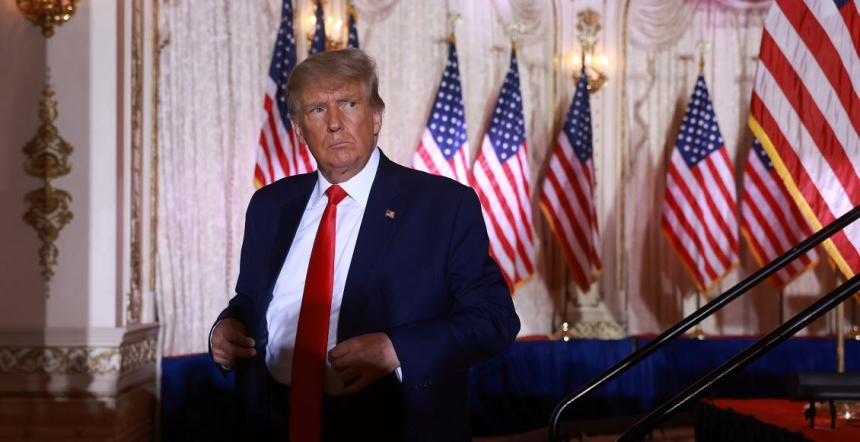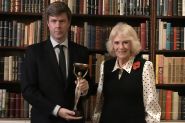
In Venice, a city in perpetual mutation where beauty remains a constant and luminous evidence of the present moment, Marya Kazoun has made her home. A Lebanese-Canadian born in Beirut, she attended the Protestant College and then the Lebanese American University for a bachelor’s and a master’s degree in interior architecture. She also holds a Master of Fine Arts from the School of Visual Arts in New York. Marya now has dozens of exhibitions to her name, both solo and group shows.
As a contemporary multidisciplinary artist, she creates performance installations where she paints the abstract. Marya successfully combines the precarious and the durable, the concrete and the surreal, decadence and beauty, stripped volume and baroque space, mystery and clarity, through dozens of different materials, in a constant and coherent search for the meaning of belonging to the world, part of a powerfully recreated whole, wonderfully inclusive and benevolent.
It is not in vain that the then director of the Uffizi Galleries in Florence, Eike Schmidt, called upon her talent for a solo exhibition in 2023 in the museum’s vast white hall (“sala bianca”). “First Act,” a work of strong mystical valence, remains nonetheless surreal, staging a luminous world where the forces of good from an indecipherable and unprecedented triumph over the forces of evil, symbolized by an army of crawling and sparkling locusts made of blown glass.
[gallery link="none" size="large" ids="231230,231231,231232,231233"]
To illustrate the theme of the event, renewable energy, Marya generated a new world inspired by the immutable symbol of the nativity. A syncretism of millennial beliefs is operating, leading to a renewed creed, faith in a future world cleansed of its dross. The scene presented to the observer succeeds in imposing a universe that is both unusual and benevolent. The giant creatures sewn in immaculate white fabric that symbolize the Magi carry wind turbines at their extremities. The most precious pledge for the coming world would thus be the power of the wind, a breath of clean air that would sweep away the contaminated space and oppose the effects of rampant consumption represented by the locusts, a biblical plague par excellence, glass blown stiff by the pure breath of the white giants. The verticality of the Magi dominates the territory of the crawling insects. The gentle, harmonious touch evoked by the fabric of the characters cancels the threat of the rigid creatures in gray crystal. A fluffy, uncontaminated world that is reminiscent of the whiteness and unfathomable depths of the Arctic continent triumphs over darkness and impurity.
The backward journey through the artist’s works is striking. From installations, performances, paintings, or sculptures with surreal themes, nothing is unworthy of the work, from the bones of animal carcasses to disparate fabrics, handkerchiefs, skinned plastic bags, or other glass debris. What might at first seem irrecoverable is patiently and ingeniously assembled into a patchwork worthy of a haute couture model, producing weavings and even scaffolding of unprecedented design. Like a spider weaving its web with devotion, the artist can choose to blend into it in a perfect mimicry effect or to cleverly include other characters, like humans lending their bodies to the work to animate it. The latter then offers a parallel world governed by dreamlike laws. Rather than trapping prey, the web seems to capture the dreams of a world from which no one would be excluded, a metaphor for a universe embracing humanity in its entirety.
For it is with this humanity that Marya Kazoun is concerned. The universe of childhood inhabits the adult body in this shaman woman, who pushes back the boundaries of the impossible in the performances she creates. We discover her as a patient worker, a craftswoman with fairy hands, pulling threads and weaving fabrics without the need for a loom. The abundance and profusion of the Oriental imagination are combined with a methodical and pragmatic organization worthy of Nordic minds. It is the thirst for the eternal search for a parallel world that betrays the will to exorcise the war years of childhood. The image of leaflets dropped over Beirut by enemy planes returns obsessively. In her work, the conversion of negative emotions into an aspiration for universal love takes place. This is evident in the installation “Momoth” (2009) on the Venetian island of Sant’Elena within the Venice Biennale framework. Real mother’s milk is offered to the public in small glass spheres bearing the incision “immunity” by two characters embodying Momoth, summoned by Emperor Constantine and his mother, Saint Helena, in an attempt to save their people from a calamity.
The appearance of Murano crystal in the work is not recent. The countless facets of shattered crystal offer a thousand possible interpretations, conducive to the artist’s multicultural message. Married to Adriano Berengo, a famous Murano entrepreneur, they met at a Beirut fair in 1999, and Marya can count on the talent of the lagoon’s greatest master glassmakers. The crystal explodes or implodes, reflecting the world’s grimace or revealing its fractures. A prescient work, “They were there,” from the Glasstress 2011 project petrifies the observer. The work was exhibited again at Art Dubai in 2012. On a floor reconstructed piece by piece with thousands of pieces of glass and mirror debris, two characters whose bodies are imprisoned in acrylic material suits move like survivors or mutants on the debris-covered floor. Helical ladders dot the scene like segments of DNA, proposing the ascent to another possible world. A thousand angles of Beirut after the port explosion on August 4, 2020, are evoked nine years in advance. From nothingness and debris, life will resurge, both solid and fragile.
What a journey since the installation-performance “Ignorant Skin” (2005), where creatures, Amos, detach from a wall woven with threads, glass beads, and bamboo only to seek refuge in it again, unable to cope with the hideous reality. “Self-portrait” (2003) stages the author’s “dark” facets, sumptuously adorned with an outfit of her own creation reminiscent of designer Alexander McQueen at his most expressively free, surrounded by “self-portraits,” creatures of uncertain nature in iridescent blown glass with silvery material. In “Steady Breath” (2005), the artist is again a “gothic” protagonist of her installation, with woven spirals that unmistakably recall Calder’s sculptures.
“Where he came from,” an installation performance in 2009, is one of the first works that fall within the “Glasstress” project founded by Adriano Berengo in tribute to Murano art, inviting contemporary artists from all disciplines, sculptors, painters, or musicians, to collaborate with the island’s master glassmakers. Launched in 2009 as an integral part of the Venice Biennale, it is now one of the major events combining craftsmanship and creativity, aiming to renew the art of Murano crystal through contamination and the support of contemporary art. Crystal bubbles float above the “Where he came from” installation, connected by invisible threads. Plastic, acrylic, and paper tissues were used to reconstruct a landscape of pristine peaks dotted with alpine lakes. Even in 2009, in “The mountains,” Marya Kazoun denounced in canvases the dreadful harm done to nature by climate change.
"Memphis Squad," a 2021 installation created within the Glasstress framework, brings a threatening army of mantis in violent turquoise blue to the Hermitage Museum in Moscow. Standing on their hind legs, the uxoricidal warriors are in combat position, raising a thousand questions about the fate of a world devoid of all wisdom. In “Still Life,” a 2022 installation, Kazoun modestly celebrates the funerals of the same disenchanted world. A blown glass metaphor of a still life, an opaque white coffin gathers opaque or transparent crystal leaves. The absence of colors evokes the absence of sun and life. Love has deserted the world.
Discreet, silent, respectful, hardworking, and determined, Marya retreats into herself while unfolding her intimate thoughts through the multiple universes she creates. “We are the heirs of a thought surviving thousands, even millions, of years. We are the seekers of truth,” she says through the furry creatures, “Amos,” of the “Ignorant Skin” installation (2005). She adds, “In the eyes of Amos, we would be the guardians of the chain and the ambassadors of the beauty that comes from within.” The unique beauty that, undeniably, could save the world…
Sites: https://maryakazoun.blogspot.com/?m=0 https://fondazioneberengo.org/artist/glasstress-artists/marya-kazoun/
Read more





Comments